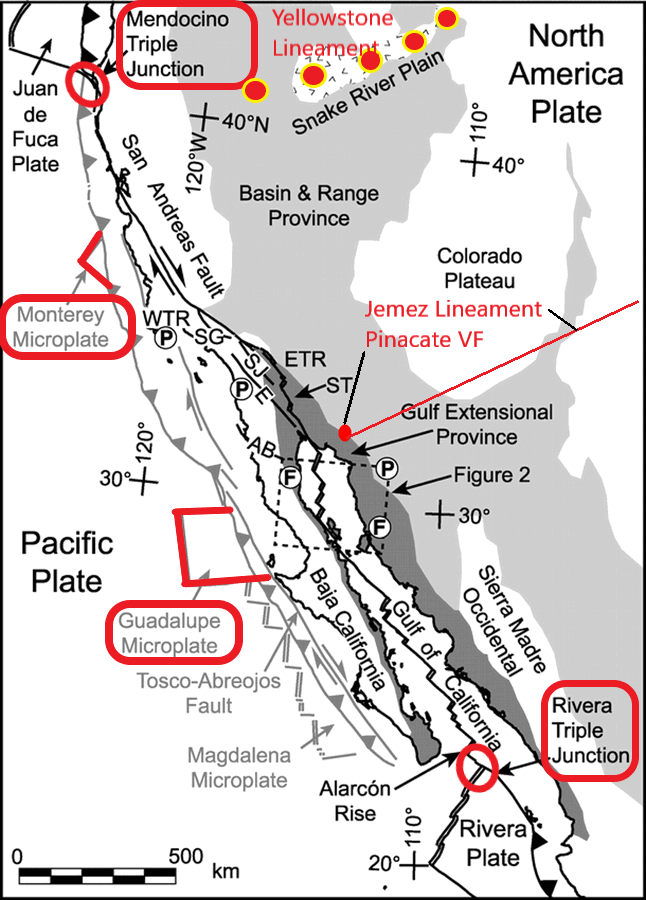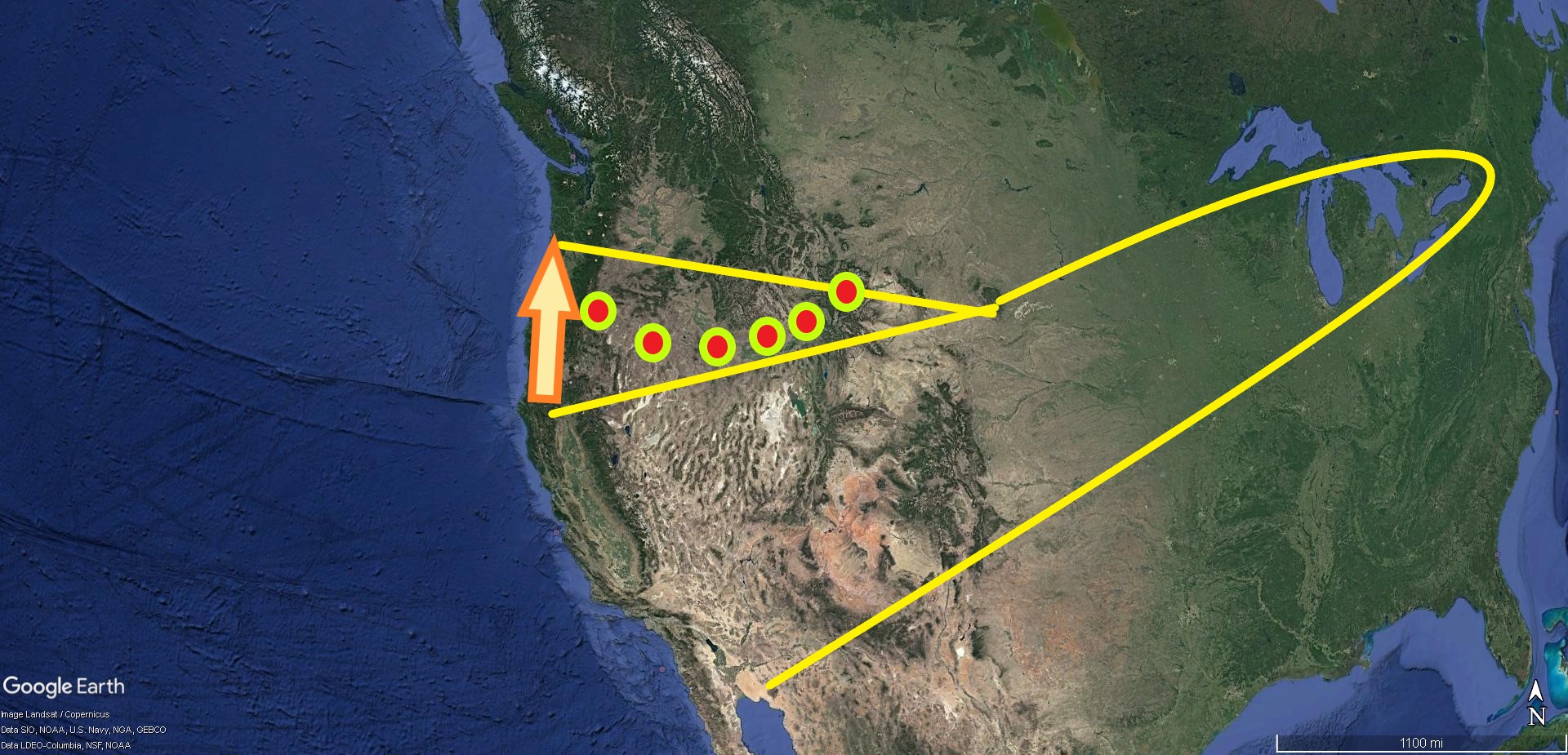The Final Chapter
Eye of the Storm presents a case study for how electrical forces shaped the Colorado Plateau and its surroundings. In this tenth and final chapter, there are a few things to conclude, and review in summary.
What we’ve done in these chapters is reverse engineer the Earth, starting with outside layers and peeling inward, following the patterns of electrical scarring. We logically assume circuitry is the fundamental structure of the planet, since that is the very structure of life, energy and the cosmos in general. Abstract theories for cause and effect aren’t needed when the patterns of Nature are laid bare for us to see, repeating at every scale in every structure in the universe.
We merely need to recognize what makes the patterns. In the case of geology, it’s not just gravity, the mists of time, or coincidence. It’s the diffusion of charge in an environment of extreme electrical stress. Meaning, in the case of the Colorado Plateau, a huge potential difference between Earth and something else.
Charge diffusion means there is a circuit. Whether an element of charge finds a bond in atomic structure, or drifts in patterns formed by fields, it has to move. And that motion is subject to a myriad of emergent influences, but it is always patterned in the most fundamental way by the coherent influence of electric circuitry. Whether a chemical reaction, or a thermodynamic cycle, dissect it down to the quantum level and it’s all electromagnetic circuitry.
And as a result, we can look at the planets and stars in the Solar System and see the same effects at play over and over.
If a planet has dead circuits, like Mercury, or the Moon; facing a high potential, it responds to static charge build-up on it’s surface with explosive discharges that leave it pockmarked with craters and rilles. The evidence is overwhelming, as anyone who reads Thunderbolts knows.
Then there are planets that used to be alive and are now dead, like Mars. Or those in the process of birth, or death, like Venus. And there’s a bunch of debris from planet formation and electrical interactions orbiting the sun.
But if a planet is ‘alive’ with an atmosphere and crust enveloped in a self-amplifying magnetosphere in sustained resonant feedback with the Solar System, it must have energy flowing through that crust and atmosphere, storing inside it, making it a spherical capacitor. Weather and geology is driven by this capacitance. That is pure logic and physics, once it’s recognized that Earth and the Solar System are circuits.
Correlations can be drawn because circuitry acts the same regardless of what planet it’s on, depending on type. Hence we can see Jupiter’s storms being motivated by circuitry, and correlate actions of turbulent wind with geologic patterns on Earth, and draw conclusions about the common cause. We don’t have to “theorize” – we just apply known science.

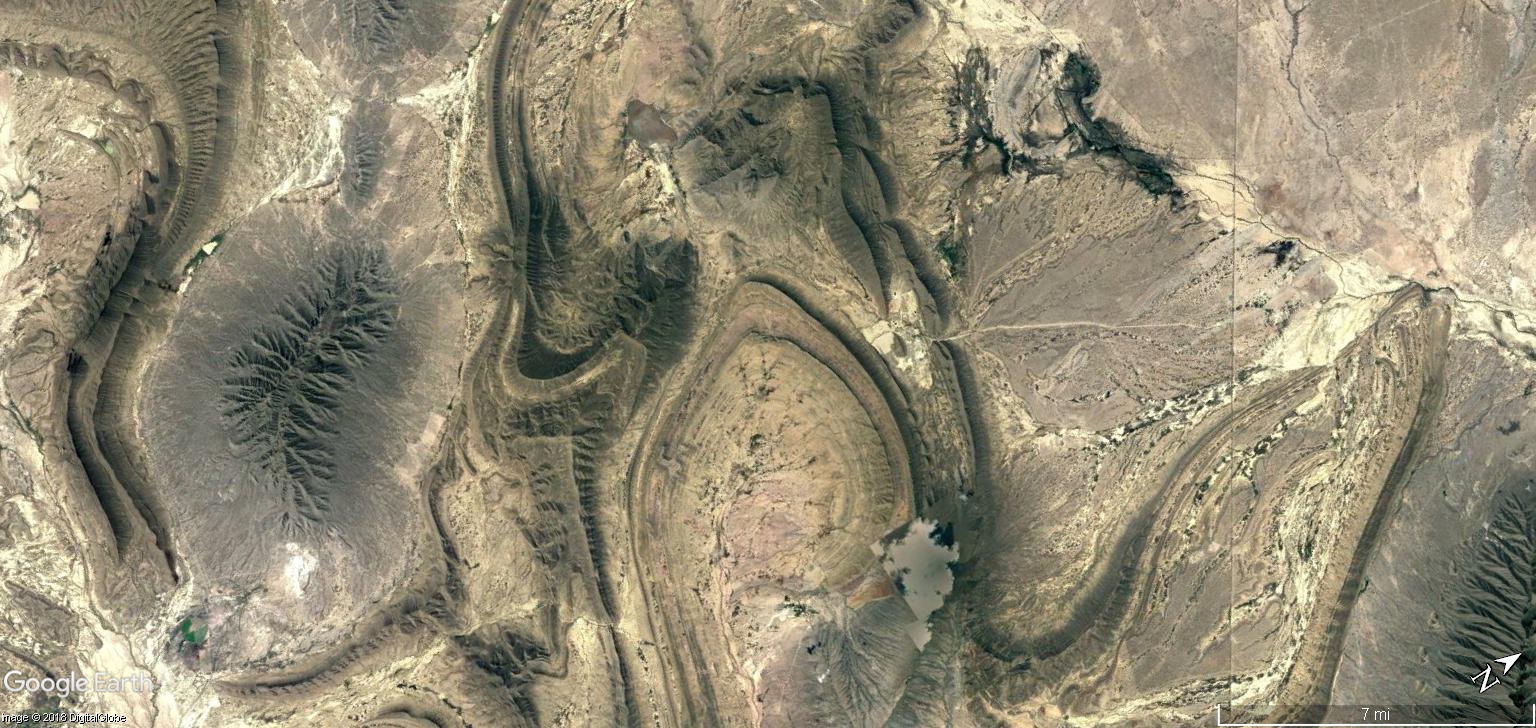
What we’ve looked at so far:
Tetrahedrons
Mountain structures shaped by sonic shock waves provide the biggest evidence of all the Electric Earth ‘theories’ presented in the Eye of the Storm. If tetrahedrons and other features produced by shock waves in a wind tunnel precisely match what we see in geology, and if there is no other demonstrable process that can produce the same features, that is astonishing evidence that supersonic, plasma winds built mountains.

If supersonic plasma winds are acknowledged, then the planet’s voltage rise and other circumstances required to create them have to be acknowledged as well. And that brings all the other electrical processes described in Eye of the Storm into play, because they are inevitable consequences of charge diffusion under those circumstances.

Consensus science has decided tetrahedrons result from a combination of faulting, uplift, water erosion and huge spans of time. They have no empirical proof – no proof whatsoever – that water erosion can produce repeating, harmonic and nearly perfect geometric forms like these shown here, and many others presented in earlier chapters. Water erosion simply can’t be that consistent. The earth scientists merely have an unverified hypothesis they represent as fact-confirmed-by-consensus, and they ignore the patterns. Ignoring the obvious is scientific malpractice.
These forms are, without doubt, from sonic shock waves. Tetrahedrons are formed in the separation bubble of a reflected shock wave. It’s a region where a tetrahedral zone of low pressure forms. This low pressure zone attracts neutral and ionized dust like a vacuum cleaner equipped with an electrostatic precipitator.
The separation bubble is electrically, and pressure-polarized from the incoming plasma winds, causing static-electric attraction of ionic dust. There are also magnetic fields to attract ferrous materials in identifiable bands and sheets that conform to the shock patterns.

On an Electric Earth, the means and mechanisms are all there to form mountains: wind, water, dust and electrical bonding.
Wind, Water, Earth and Fire
Mountain features match shock-wave forms in excruciating detail far beyond the unambiguous tetrahedral shape of the separation bubble. There are harmonic frequencies, unstable wave forms, subsurface reflections, constructive and destructive interference and expansion fans found in geology – not once or twice coincidentally, but over and over again – all empirical proofs because the same features have been produced in supersonic wind tunnels for decades.

That said, exploring mountains and researching the Electric Earth is like an Easter Egg hunt, with surprising evidence around every bend. Sometimes the evidence is so cool, so unexpected, and so hidden in plain sight, that it knocks even my socks off. So, in this final chapter of Eye of the Storm I’d like to share my three favorite Easter Eggs.
Sneeze of the Gods

This is a photo of the Dragoon Mountains in Southern Arizona. Historically, the Dragoons are famous for Cochise’s Stronghold, a maze of rocky defiles where Chiricahua Apache raiding parties eluded capture from United States soldiers during the Apache Wars. The Chiricahua Chief, Cochise was a recognized genius at guerrilla warfare, and used the Southern Arizona terrain strategically to stage raids and then vanish. He is supposedly buried somewhere in those rocks above the Stronghold.
If you look at these ragged pinnacles and sheets of rock stacked together like triangular dominoes, you might be tempted to agree with geologists and say; gee, it must have taken millions of years. But I can show you, it happened pretty quickly. The evidence is in this monolithic granite tetrahedron.
The tetrahedron has a drip on it. A drip, meaning the tetrahedron was deposited as a viscous mass, like candle wax, or hot fudge. The drips are highlighted in the next image.


Directly above the drips are pillow-like rocks capping the crown of the tetrahedron. The pillow-rock above the drip at far left is broken.
It’s not a volcanic lava flow. These rocks are granite and must bake under pressure, deep underground for immense time according to “science”. These fluid forms have been exposed to atmosphere since they were made, because you can’t have free flow under tons of overburden pressure.
It’s not that it’s unusual to see fluid shapes in granite boulders. Granite rocks show fluid puddling, settling and drop configurations all the time. Even drips, but they are always broken and hard to discern with a photo. But this one is huge and so obvious.


Along the base of this drip, there is fluting where the falling, sheet-flow of fluid solidified in motion, like the mineral deposits from sheet-flow on cavern walls. Below the end of the drip are splatters and drops that fell free and landed on the rock face below.

A boulder with a runny nose makes no sense in consensus geology, so they ignore such a thing, or insist it’s not there. But it is, and it’s one minor confirmation of Electric Earth theory. It also presents loads of information about how it happened and the environment on Earth at the time.
The elongated pillow rocks are at the tip of the tetrahedron, therefore they constitute some of the last matter deposited into this separation bubble. This matter was deposited in a fluid state, and it cooled into a crystalline matrix of granite from the outside-in. Like candle wax, it formed a skin that retained heat inside, keeping the inside molten for longer. They are also at the top of the tetrahedron and stayed hot longest because they had the mass of the rock below them radiating through. It likely took years for this rock-mass to cool down. The pillows hang over the leeward side of the tetrahedron, so the wind was from behind pushing them over the edge, elongating their shape like water balloons.
The separations between rock is where shock waves, charged with current, evaporated material away or prevented it from depositing, leaving gaps. Shock waves in this environment were not only from the winds shearing and deflecting, but also explosive lightning strikes and reverberating thunder. They tend to electromagnetically align parallel and orthogonal, since the winds themselves were aligned with electric fields, and the shock waves carried current. The rock shrank as it cooled, creating the pillow shape.
The largest pillow-drop burst, leaving a broken pillow, and its contents spilled out in a stringy drip. In fact, the top of the broken pillow displays lightning scars that likely caused the pillow to break and drip it’s viscous guts before it completely solidified. Other pillars squeezed out their fluid like toothpaste.

I show this example because it illustrates the kind of confusing geologic detail Electric Earth theory can explain with ease, proving it’s not really confusing at all. It just takes breaking through the matrix of false paradigm and looking with fresh eyes.
It also gives a sense for the way matter was flying through the atmosphere. There was a fire-hose of hot silica in the plasma wind that formed the Dragoon Mountains. It formed like jello in a mold as ions recombined in the suction of separation bubbles.
To be clear, this mountain-building event occurred in Earth’s primordial past, near the end of a period when the continents were forming. There are mountains chock-full of fossilized dinosaurs and sea life in strata of this age, but no evidence of man. There were severe plasma storms in human history, but not filled with a fire hose of molten silica.
Ancient people did experience “coronal storms” due to some planetary conflict in the Solar System. Ancient myth is pretty clear about that. They must have been less powerful than what’s been described, yet still carried more punch than they do today. This next Easter Egg tells that story.
Handbag of the Gods
In Chapter 5 we looked at coronal storms. We looked at the San Rafael Swell and Capitol Reef, as well as Monument Valley and the San Juan River basin, as sets of dome and crater pairs produced in the eye of the great primordial storm that created the Colorado Plateau.
The weather that produced these domes and craters essentially consisted of a thunderstorm producing updraft winds, paired with a cyclone producing a downdraft at it’s core. Electrically, it formed a ring current between them, with it’s lower half being currents in the ground.

It’s upper half consisted of the meso-cyclone and cyclone connected by a jet-stream wind, from updraft to downdraft, forming an arch of condensate. This loop is what would be, under calmer circumstances, the thunderstorm anvil cloud, a layer of positive charge forming the top half of the mesocyclone. When mesocyclone and cyclone come together in a turbulent, intensely charged climate, the anvil is swept into a filament that feeds the downdraft of the cyclone. The cyclone and mesocyclone then becomes one circuit. This is how fractals “grow”. Circuits connect together and pairings become groupings and groupings become networks. That is what we see on Jupiter. The Great Red Spot is a network circuit of coronal storm loops.
We also looked at direct visual evidence of coronal loops on Jupiter, and they happen to be in almost the exact same pattern in the Great Red Spot as the dome and crater pairs on the Colorado Plateau, because the storm systems are fractals and driven by similar circuitry.

Also, like the ground current loops discussed in Chapter 9, these ring currents had DC input from lightning and plasma winds, and current junctions with ground, so they could act as Op Amps, using the DC currents to amplify the ring.
That realization was a pretty good egg. But it gets better.
The big Easter Egg was finding this type of storm system depicted in ancient art. In fact, it’s depicted on the oldest, most controversial and mysterious megalith ever discovered: the Vulture Stone at Gobekli Tepe.

The stone “T” pillar depicts arched clouds across the ‘sky’, or upper portion of the pillar. Yes, the mysterious “Handbag of the Gods”. And this is just my theory, of course … but the handbag depicts the box-like shape of mesocyclones seen at a distance, with the arch receding from center to behind, where it downdrafts into an unseen cyclone. A distant viewer would only see a squall line of thunderstorms surrounding the cyclone with, instead of an anvil cloud, the jet-stream to the cyclone arching away, just as it’s depicted.
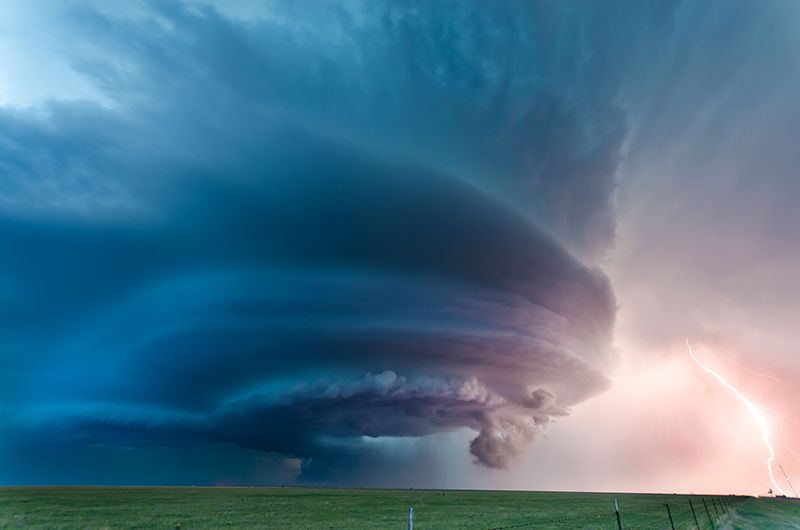
Note the odd figures above the clouds. I believe these represent the type of thunderstorm discharge we call sprites and gnomes. In a coronal storm, plasma discharges from the cloud tops would not be as rare as they are today. Not that they are all that rare today, but in this past environment, they would have been lit like Christmas.
Above and below the clouds is space patterned in triangles, cut across by a thin layer of rectangles. This represents the triangular pattern of rarefaction and compression in supersonic winds, the narrow layer being a faster jet-stream, or lenticular layer between conflicting winds with interference patterns making the box-like segregations.

The vulture, or thunder-bird is a stylized representation of the Peratt instability also known as “squatter man”, which in rock art is often depicted with a bird’s head. It would have presaged the storm, appearing in the sky as an aurora bringing the portent of doom to come. The legless birds also depict aurora that are fractal repetitions, at least in partial image, of the central plasma column.

Below the birds, in the base of the “T”, are depictions of a wolf (the howling wind), a salamander (the tidal floods) and a scorpion (instead of a dragon, meaning ground-to-ground discharge). Arrow-headed snakes appear here and there, representing lightning, or currents. The “T” pillar itself represents Earth and Heavens; as above so below.
A popular theory about this stone is that it depicts a comet, or meteor strike. That’s because the bird is holding a ball. Go figure. I like my interpretation better.
Gobekli Tepe is dated earlier than 9,000 BC, or the time of the Younger Dryas. It’s also when Plato said Atlantis disappeared. And it correlates well, all things considered, with the time we recall as Noah’s flood, or Gilgamesh if you prefer.
Was this a shrine made by survivors? Or did it have utility in surviving the storms? They must have hid underground to survive, for even if they were in a region of calmer winds, radiation, lightning and fouled water would have surely killed them if they were unprotected. The implication is clear however, at Gobleki Tepe as in every ancient myth, there was an electrical storm the likes of which do not appear today, caused by some solar system event.
Thunderbolt of the Gods
Now the final Easter Egg. These handbags are depicted all over the world in ancient stonework. The earliest know depictions are in petroglyphs that can’t all be dated, but are believed to be from before 9,000 BC. The following is an example from Australia.
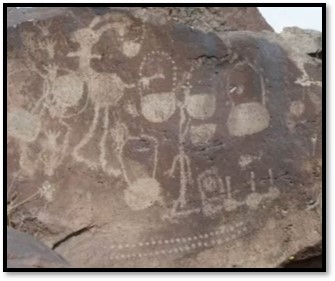
If you read this petroglyph right to left, like a storyboard, it first shows a small coronal storm cloud (right-most handbag) apparently forming. Next it’s a larger one above streamers rising from the ground. These would be plasma streamers, like what forms in a lightning connection, only visible in “glow mode”. Next the cloud forms something below, while something else rises to meet it. They look like hoops, or semi-circles. These would be plasma clouds reaching to meet, also visible in “glow mode”. Then there is some kind of squiggly figure, after which the clouds appear again. Never mind the kangaroo.
The squiggly figure is the plasma afterglow of a super-sized lightning bolt. What I believe this depicts is the cloud – the entire mesocyclone of a thunderstorm – collapsed in a “Z” pinch, then reforming.
That would be like a hydrogen bomb going off. But I’m pretty sure that’s what we’re seeing. I wonder if there isn’t a large crater a few miles in front of this rock. The entire colloquy is represented in stylized form in the Anunnaki figures in ancient Sumeria. The handbag, and the vine of “pomegranate” that looks like the Australian squiggly figure.


They are often holding pine cones, which I think represent the supersonic winds thrusting forward at the head of the storm and the fractal pattern of rarefaction and compression they would display.
In fact the entire figure represents aspects of the storms, from the birds head of aurora discharge to the legs flat footed on the ground – one uncovered and billowing muscle, like the winding updraft to a meso-cyclone and the other covered, unable to be seen, like the returning airflow down a cyclone.
It’s as if the gods – the winged, anthropomorphized aurora that presaged the storm – are delivering the storm; presenting handbags of terror (storm) pine cones of destruction (winds) and massive thunderbolts (lightning). It even displays a sense of hierarchy between heavenly and earthly phenomena, as in the gods and demi-gods endemic to ancient religions.
I know people will disagree, because everyone has a theory about the “handbags”. Some think they are for a drug stash, as if the ancient gods munched pscilocybin all day. Others say they carried pollen, but who collects pollen, and why? It makes more sense these figures symbolically commemorate the most Earth shattering event know to man.
Whether you agree, or not, I want you to understand. The events I describe are in our history. They influence us today. We are just confused by liars and lazy thinkers in our midst, from academia, to media, to politics. Science to culture to power. Break the bonds of the brainwash they feed us and think for yourself. Do it and you will find answers.
Nature makes itself known. It’s up to us to raise our consciousness to its level. Once done, truth is self evident. At least this is my experience. I have no special talent, I’m just keenly aware of what’s around me and eternally curious as to how it got there. Ask the right questions and Nature shows the answer. I refer to this feedback circuit as God.
I present these conclusions for your consideration. I won’t deny other possible answers exist, and we need to consider everything. But there is a bit of urgency in the message I get from all of this, which I’m compelled to share.
Earth’s internal circuits are warming-up. Volcanic and seismic activity is increasing all along plate boundaries that define the sub-surface currents. Weather has become a bit strange. At the same time, the Sun is entering a minimum period of energy output.
Solar minimums have direct correlation with colder weather on Earth, but also higher seismic activity. The Earth has to respond to the change in Solar energy by releasing some of its stored energy in order to maintain its balance. A reduction in Solar wind means a reduction in energy induced by Earth’s magnetic field. With less input energy, internal currents wane and the magnetic field weakens and expands. But as the magnetic field expands it captures more solar wind, increasing induction.

This tug of war plays out as Earth tries to keep pace with the Sun, but it oscillates Earth’s circuitry as currents ebb and flow, creating resistance and heat that has to release. This happens in the transient phase, shifting from maximum to minimum and vice versa. It’s the rate of change that matters. We may see a dramatic increase in the frequency of earthquakes, volcanoes and severe weather as we rise out of the minimum.
We are also experiencing a magnetic pole shift. The magnetic pole shift is related to changing crustal currents. How I don’t know (yet), but there is feedback between them, because there has to be. It’s predictable, it’s physics and it’s happening.
If there is one thing that should be evident from reading Eye of the Storm, it’s that Earth is an electric circuit driven by whatever is in its core. We don’t know what the “core” is. It’s not a spinning ball of iron. The surface effects we experience outside of the crust are driven from within as a result of how the core reacts with the solar system. The surface effects are a capacitive reaction to changing energy levels in the core, because Earth is a spherical capacitor.
Crustal boundaries surround the Indian Ocean, and above segments of these currents are some of the most active volcanic regions, including the Indonesian Islands and Madagascar. They are very active right now.

These are likely the largest currents on Earth and the closest together, producing magnetic flux between them. There is already a large gyre in the ocean, deep off the coast of Madagascar circulating between these currents.
Does this mean there are catastrophic storms in our future? Damned if I know. Check what the ancients say. All I know is we better get off the dime and understand this Earth as it really is and stop listening to academics.
Thank you all for reading. Thank you for the gracious comments. These articles appear on my website, thedailyplasma.blog, as well as Thunderbolts.info. and can be accessed by anyone entirely free. As people wake-up to reality, please point them to this content.
















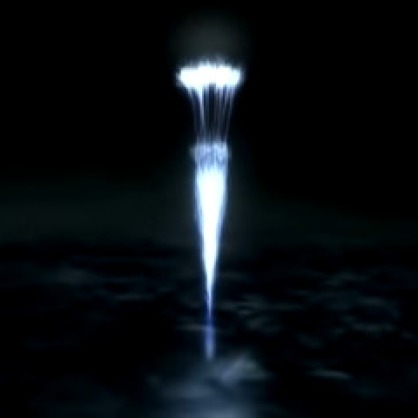















 The sinuous pattern shows how charge density spread in longitudinal waves through the moving filament as it met resistance. It’s similar to how tension and compression travels in waves through a steel spring. It forms a sine curve, with the greatest amount of volcanism, trenching and dredging at the inflections, where momentum changed greatest, amplifying the magnetic induction of eddy currents. The deepest trenches show where the current came to rest, and momentum suddenly decelerated to zero, as an electromagnetic balance was achieved across the loop structure.
The sinuous pattern shows how charge density spread in longitudinal waves through the moving filament as it met resistance. It’s similar to how tension and compression travels in waves through a steel spring. It forms a sine curve, with the greatest amount of volcanism, trenching and dredging at the inflections, where momentum changed greatest, amplifying the magnetic induction of eddy currents. The deepest trenches show where the current came to rest, and momentum suddenly decelerated to zero, as an electromagnetic balance was achieved across the loop structure.












